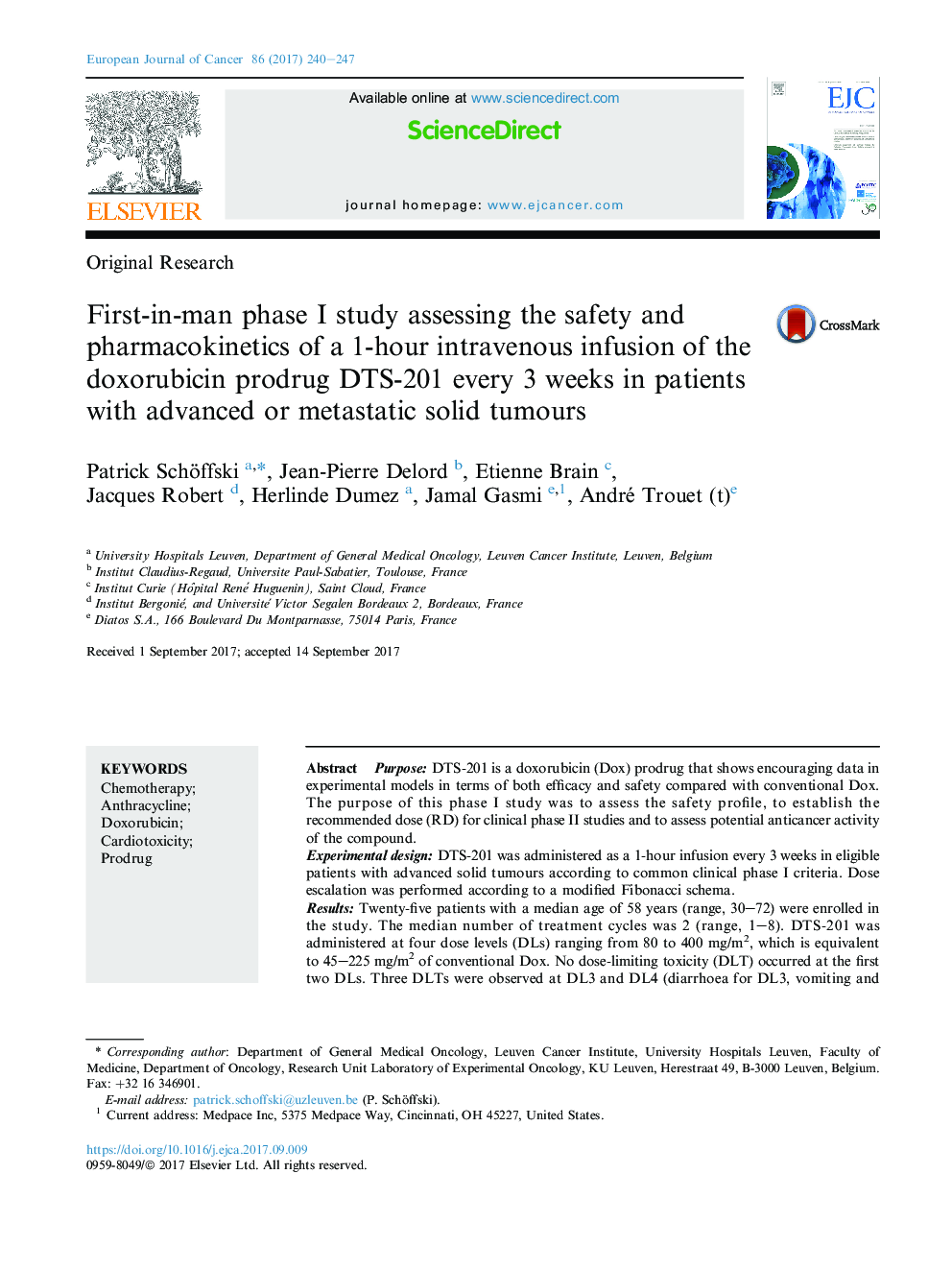| کد مقاله | کد نشریه | سال انتشار | مقاله انگلیسی | نسخه تمام متن |
|---|---|---|---|---|
| 5526154 | 1547046 | 2017 | 8 صفحه PDF | دانلود رایگان |

- This first-in-man clinical trial established the safety, pharmacokinetics, maximum tolerated and recommended phase II dose for the doxorubicin (Dox) prodrug DTS-201 in solid tumour patients.
- DTS-201 was administered at four dose levels ranging from 80 to 400Â mg/m2, equivalent to 45-225Â mg/m2 of conventional Dox per administration, resulting in high cumulative anthracycline exposure.
- Diarrhoea, vomiting and neutropenia were dose limiting and 400Â mg/m2 DTS-201 was the maximum tolerated and recommended phase II dose for the enzyme-activated prodrug.
- DTS-201 is well tolerated and safe in solid tumour patients and is not associated with treatment-related severe cardiac adverse events, even at very high acute and cumulative anthracycline doses tested.
- More than half of the patients derived clinical benefit during treatment with DTS-201, achieving either disease stabilisation or a confirmed partial response.
PurposeDTS-201 is a doxorubicin (Dox) prodrug that shows encouraging data in experimental models in terms of both efficacy and safety compared with conventional Dox. The purpose of this phase I study was to assess the safety profile, to establish the recommended dose (RD) for clinical phase II studies and to assess potential anticancer activity of the compound.Experimental designDTS-201 was administered as a 1-hour infusion every 3 weeks in eligible patients with advanced solid tumours according to common clinical phase I criteria. Dose escalation was performed according to a modified Fibonacci schema.ResultsTwenty-five patients with a median age of 58 years (range, 30-72) were enrolled in the study. The median number of treatment cycles was 2 (range, 1-8). DTS-201 was administered at four dose levels (DLs) ranging from 80 to 400 mg/m2, which is equivalent to 45-225 mg/m2 of conventional Dox. No dose-limiting toxicity (DLT) occurred at the first two DLs. Three DLTs were observed at DL3 and DL4 (diarrhoea for DL3, vomiting and neutropenia for DL4). DL4 (400 mg/m2) was considered the maximum tolerated dose. Myelosuppression was the main toxicity, and NCI-CTC grade III-IV neutropenia was common at RD. Non-haematological adverse reactions were mild to moderate and included nausea, anorexia, asthenia and alopecia. No treatment-related severe cardiac adverse events were observed.ConclusionsDTS-201 is well tolerated and safe in heavily pretreated solid tumour patients. A high equivalent dose of Dox could be delivered without severe drug-related cardiac events. DTS-201 showed evidence of clinical activity with a confirmed partial response in a patient with soft-tissue sarcoma. The recommended phase II dose is 400 mg/m2.
Journal: European Journal of Cancer - Volume 86, November 2017, Pages 240-247